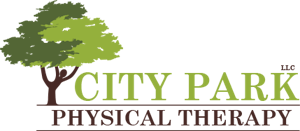Physical Therapy versus Chiropractic Care
One of the most common questions we are asked is, what is the difference between physical therapy care and chiropractic care? It’s a good question because chiropractors have suggested that physical therapy (called physiotherapy outside the United States) is a subset of chiropractic. That is not the case. Chiropractic and physical therapy are not the same and are two separate professions licensed by governing bodies in each state.
While there are a number of philosophical approaches regarding the care of the muscular system, nervous system and skeletal system, we will attempt to provide the most common approaches of both physical therapists and chiropractors.
Physical Therapy

- Physical therapists are experts in improving mobility and motion. Pain-free movement is crucial to your quality of daily life, your ability to earn a living, your ability to pursue your favorite leisure activities, and so much more.
- In order to help restore proper movement, physical therapists address limitations in motion, improper alignment of joints, muscle weakness and imbalance, posture problems, and improper movement patterns. Often this involves treatment of the nervous system, muscular system and skeletal systems (commonly known as the musculoskeletal system).
- Physical therapists treat a wide variety of people including children, athletes, adults and seniors.
- Patients are evaluated, a list of problems is created, patients are educated about the findings and a plan of care is developed.
- Care for nerve and musculoskeletal disorders typically lasts 1 to 3 months. It’s common for patients to attend physical therapy 1to 3x per week and each treatment session lasts 30-60 minutes.
- Patients are empowered with education and home programs and encouraged to independently care for their condition at home to speed the recovery process.
- Treatment may consist of hands-on, therapeutic soft tissue techniques (a special type of therapeutic massage), joint mobilization or manipulation, and therapeutic exercise including neuromuscular retraining.
- With some patients, treatment may include the use of hot packs or cold packs, electrical stimulation, and ultrasound. These treatments are used sparingly because patients can be educated to use heat or ice and home and recent clinical research has called into question the value of the use of ultrasound.
- Generally, the relationship between a physical therapist and their patients is to educate and empower the patient to prevent future reoccurrences of problems.
Chiropractic Care

- Chiropractic is an alternative health care profession that focuses on disorders of the musculoskeletal system and the nervous system, and the effects of these disorders on general health.
- Chiropractic care is used most often to treat neuromusculoskeletal complaints, including but not limited to back pain, neck pain, pain in the joints of the arms or legs, and headaches.
- The “specific focus of chiropractic practice” is the chiropractic subluxation. Traditional chiropractic assumes that a vertebral subluxations or problems with the joints of the spine interfere with the body’s function and its innate intelligence.
- The goal of chiropractic is pain relief and the correction of subluxations (misalignment) of the spine.
- X-rays are often used to identify subluxations, or misalignments of the spine; however, no clinical evidence exists to prove that subluxations can be detected by x-rays.
- Practitioners believe that misalignment and nerve pressure can cause problems not only in area around the spine, but with organs and organ systems some distance from the spinal cord.
- Some chiropractors claim to provide “physical therapy” (the term “physical therapy” is protected by state law) or “physiotherapy”. Chiropractic physiotherapy usually consists of hot packs or cold packs, electrical stimulation, and ultrasound.
- While chiropractors may treat conditions other than neck and low back problems, treatments for disorders of the shoulder, hip, knee or ankle often involve adjustments of the spine as well.
- Treatments typically last 10-20 minutes. Chiropractic patients often times are encouraged to schedule treatment over the course of months or a year to “maintain” spinal alignment and health of the nervous system.
- The treatment philosophy, while conservative, requires dependence on the chiropractic doctor to maintain alignment of the spine. Patients are encouraged to return for chiropractic care when pain returns.
Experience the Difference Physical Therapy Can Make for You.
We Want You to be Our Next Success Story!
To Schedule Call
(504) 309-5811


